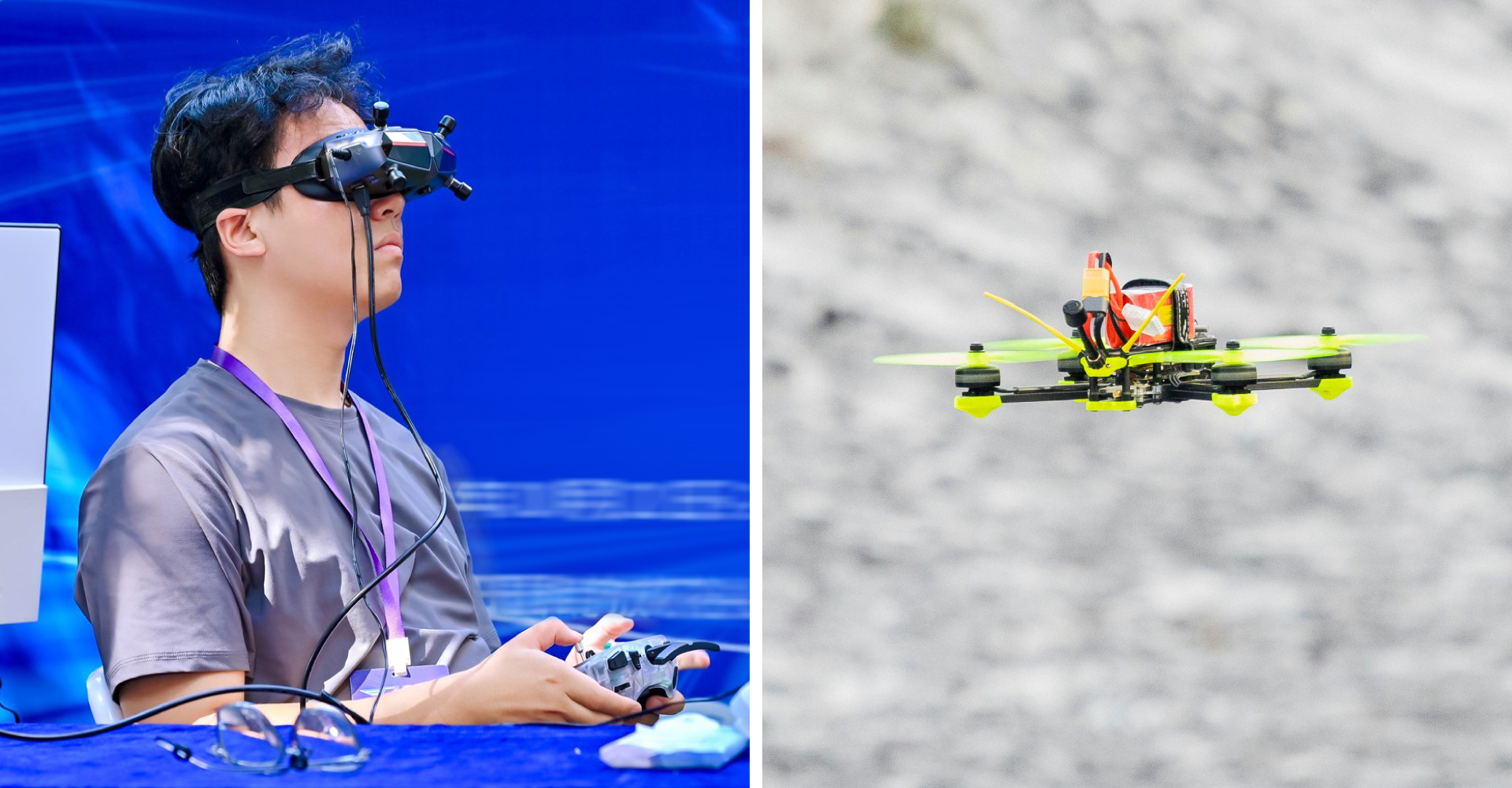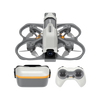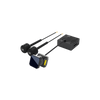
1. What is an FPV Drone?
2. The Development History of FPV Drones
3. Key Features of the FPV Drone Industry
4. Main Components of an FPV Drone
What is an FPV Drone?
FPV stands for "First Person View," a technology that allows users to control a drone or vehicle by viewing real-time video footage captured from the drone’s camera. This immersive experience provides a “pilot’s-eye” view of the flight, making it popular among drone racing enthusiasts.
An FPV racing drone is a type of unmanned aerial vehicle (UAV), often referred to as a "racing drone" or "first-person racing drone." Technically, it lacks autonomous flight capabilities, meaning it’s more aligned with RC aircraft models than with typical drones. Enthusiasts typically assemble their own drones from individual components, and these drones can reach speeds of 120 to 230 km/h, offering a thrilling and high-speed experience.

The Development History of FPV Drones
2014: The Birth of FPV Racing
The FPV drone community began gaining momentum internationally in 2014. A thrilling video showing a drone racing through a forest, posted by the European drone enthusiast group "Airgonay" on YouTube, went viral. The same year, drone enthusiasts in California formed the "FPV Explorers and Racers" team, further popularizing the sport.
2015: Establishing Racing Associations
In 2015, the MultiGP association was founded in the United States. This group has grown to become the largest drone racing event organizer globally. In 2016, the Drone Racing League (DRL) was also established to host professional drone racing events worldwide, helping cultivate the sport and train top pilots.
2016: The World Drone Prix in Dubai
In March 2016, the World Drone Prix took place in Dubai, offering a grand prize pool of $1 million. British teenager Luke Bannister won $250,000, raising the global profile of drone racing.
2018: The World Drone Championship in China
The World Drone Championship made its way to China in 2018, after a partnership between Mingxin Aviation Technology and the European Drone Champions League (DCL). The first World Drone Championship was held at the Longgang Universiade Sports Center in Shenzhen in November 2018, with a follow-up event in Ningbo in December 2019.

Key Features of the FPV Drone Industry
- An Emerging Technological Sport
Drone racing has emerged as a cutting-edge sport, often grouped with eSports and robot combat as one of the "top three smart tech sports."
- Small Market, High Entry Barriers
Unlike commercial photography drones, racing drones can reach speeds of up to 230 km/h and accelerate from 1 km to 100 km in under 1 second. This extreme performance requires high skill and fast reflexes from pilots, and due to safety concerns and industry regulations, the sport remains relatively niche. Moreover, the technical complexity and cost of entry-level FPV gear make it challenging for beginners.
- Thrilling Yet Challenging
Drone racing is often compared to "Formula 1 in the sky" because of its high-speed action. The FPV (first-person view) system lets pilots and spectators experience the race from the drone’s perspective. For many pilots, wearing an FPV headset is described as an adrenaline rush akin to "leaving your body behind."
However, drone races can be difficult to follow, as drones are small and similar in appearance. To assist viewers, drones in professional races often feature LED lights for easy identification.

- FPV Drone Flight Styles
Racing:
FPV drone racing typically involves flying around a fixed course with obstacles, where the fastest time wins. Notable international racing pilots include MCK from South Korea, Alex from the USA, and Thomas from Australia.
Freestyle:
Freestyle flying focuses on performing aerial stunts and capturing unique angles that standard drones can't achieve. Notable pilots in this field include Johnny FPV from the U.S.

The main components of the drone
| Classification | Components |
| Control system | Flight Control, Remote Controller, Receiver |
| Power system | ESC, Motor, Propeller, Battery |
| Video Transmission | Camera, VTX, Antenna, FPV Goggles |
| Structure | Frame, Appearance |

The structure of the FPV drone :

- Smaller, Lighter, More Accessible
As drone technology advances, manufacturers are producing smaller and lighter FPV drones suitable for a wider range of consumers. From professional racing to casual flying, these drones are becoming more portable and easier to handle. - Enhanced Battery Life and Stability
Improvements in battery technology and power systems have significantly boosted the endurance and stability of FPV drones, allowing for longer flights and more precise maneuvers. - Advancements in Video Transmission
Video transmission technology is critical for the performance of FPV drones, especially for high-speed racing and precise control. Innovations in this area will continue to enhance the overall flight experience. - Automation and Intelligence
Progress in automation and intelligent flight systems will make flying FPV drones simpler and safer, lowering the entry barriers for beginners and offering a more user-friendly experience. - Expanding Application Areas
While traditionally used for racing and recreational flying, FPV drones are increasingly finding applications in industrial and commercial sectors, such as aerial surveying, search and rescue, and cinematography. - Growing Community and Culture
The FPV racing culture is growing rapidly, especially in terms of professional competitions and performances. The sport is moving toward professionalization and commercialization, attracting more young enthusiasts worldwide.




-
 CADDXFPV 1303 6000KV 无刷电机$17.99
CADDXFPV 1303 6000KV 无刷电机$17.99 -
 CaddxFPV Farsight Analog Camera$129.00
CaddxFPV Farsight Analog Camera$129.00 -
 CADDXFPV GM2$69.99
CADDXFPV GM2$69.99

















































































发表评论
所有评论在发布前都会经过审核。
此站点受 hCaptcha 保护,并且 hCaptcha 隐私政策和服务条款适用。